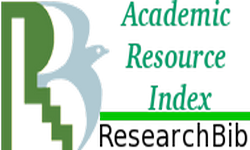Author: Davlatova, Mukhsina Yendir kizi
Annotation: This article explores the application of the translanguaging method within the framework of interdisciplinary integration in primary and secondary education. Translanguaging, as a pedagogical approach that enables learners to flexibly utilize their full linguistic repertoires, has proven effective in enhancing comprehension, critical thinking, and communicative competence. In the context of interdisciplinary learning—where subjects such as science, mathematics, history, and language arts intersect—translanguaging provides students with unique opportunities to transfer knowledge across disciplines, connect concepts in meaningful ways, and strengthen cognitive flexibility. The study emphasizes that integrating translanguaging into interdisciplinary teaching fosters deeper subject understanding, promotes collaborative learning, and bridges gaps between students’ home and school languages. Furthermore, it empowers learners from multilingual backgrounds by legitimizing their linguistic resources, thereby reducing psychological barriers to learning and increasing engagement. At the same time, the article highlights existing challenges, such as insufficient teacher training, lack of methodological guidelines, and limited curricular resources, which hinder the systematic implementation of translanguaging in interdisciplinary contexts. Based on theoretical insights and practical examples, the article argues that translanguaging can become a powerful tool for improving the quality of interdisciplinary education in multilingual societies such as Uzbekistan. Recommendations are made for curriculum design, teacher professional development, and policy support to ensure effective integration of translanguaging strategies in interdisciplinary teaching practices.
Keywords: translanguaging, interdisciplinary integration, multilingual education, teaching strategies, cognitive flexibility, subject comprehension, communicative competence, collaborative learning, pedagogical innovation, educational policy
Pages in journal: 605 - 610







